How to Increase Average Time on Page/Session Duration
Tweaks and methods of increasing average time on page and average session duration on science and technology websites.
Keeping website visitors engaged is a crucial element of any digital marketing, website, content or inbound plan. But the metric that measures this engagement isn’t always accurate.
Google Analytics reports by determining the “Average time on page” and the “Average session duration” which refer to the actual time that a website visitor spends on a page and on a website on the whole.
Even though measuring such time is a hugely important consideration for any website or website manager, it brings with it an array of problems because the metrics themselves are ambiguous.
Subscribe for marketing insights via email
“AVERAGE” METRICS AND THEIR SHORTCOMINGS
The (main) problem with these metrics is that they are based on averages of other averages of a variety of pages containing different content and goals, from different traffic sources.
Within each default channel group – such as Organic, Social, Paid, Direct, Referral etc. – are breakdowns within each grouping. For Organic, you can narrow down the data from the various search engines and then you can access that specific search engine by region. You can also do a similar analysis for the other channels and what you will see is that the averages for each channel differ quite dramatically. Often, there are no trends.
Which is why it’s sensible to drill down into each channel grouping to determine where the traffic is coming from, which source is generating the traffic with the greatest time, where the leads are coming from and whether there are any campaigns currently targeting those channels and focus there.
The general rule with such analytics, certainly those you see on standard dashboards, is that numbers don’t always tell the whole story (even though we want them to). Sometimes these metrics can also be influenced by a number of activities that may not relate to actual engagement: they shouldn’t all be treated equally to make decisions regarding engagement.
INCREASING ENGAGEMENT AND TIME ON PAGE
A Content Marketing Benchmark Report (2017) indicated that the average session duration (again, as an indicator) for websites in the Medical Devices & Pharma industry is 2:16sec., with Hospital & Healthcare in front at 3:38sec. So the good news is that if we compare by industry, the sectors we operate within are already on the healthy end of the scale.
Regardless of the algorithms Google Analytics use to determine the metrics, these are the metrics we are served. And if the metric is high then it is likely that the visitor found the content useful, enjoyed being on the website and will be back. High average session duration are an indicator of quality and relevance.
Here are tweaks and methods of increasing average time on page and session duration.
VISUAL DESIGN
The amount of behavioural and psychological reasons for a site to be visual are in abundance. In simplistic terms, sites that look good perform better than those that don’t. From the website’s theme to its image style, the design of a website is the first port of call when embarking on an optimisation task such as this one.
A clean user interface gives the visitor the opportunity to browse without distractions, making it easier to navigate to the appropriate areas of the website. Every site should be also aesthetically pleasing and consistent with the organisation’s brand guidelines. If a website doesn’t have a modern look and feel, site visitors will drop off even before any content is discovered. Review your website experience against your competitors and consider engaging a designer to assess if your site needs a refresh.
CLEAR HIERARCHY AND STRUCTURE
Similarly, websites or web pages should always follow a structure so that discovering and consuming its content is quick and easy. Removing clutter is a simple solution to allow visitors to focus and get engrossed within a topic or content. If that visitor already knows what information he or she is looking for, it shouldn’t be hard to find it on the website. Perhaps surprisingly, site visitors are more likely to stay around if there is less content available because focusing is easier.
CRAFT USER JOURNEYS
Understanding a buyer’s journey is essential to any marketer looking to create content that will directly influence prospects on a website. During the three stages of the buyer’s journey (awareness, consideration and decision) a website visitor is generally looking for a particular type of content.
Therefore, each type of content should be available on websites with user journeys crafted so that visitors can access that content, and then find out more via similar content that aims to progress that visitor along the buyer’s journey. Mapping a typical user journey is essential in this sense to craft a path for the visitor to take, building a natural progression through site pages. Begin by researching and creating your buyer personas.
CONTENT SHOULD BE WRITTEN FOR MAXIMUM READABILITY
Even with attention spans ever-decreasing, it’s surprising to see the amount of poorly written and presented content on corporate websites going into 2019. But the steps required to change this is relatively straightforward. Written content should always educate, as well as entertain. The structure of any piece of writing should follow a logical storytelling order with a beginning, middle and an end and should resonate with the target audiences at all times. The chosen font should be easy to read, with short sentences and paragraphs creating plenty of white space, accompanied by headings signposting each section. Content should also be worth reading in the first instance.
INTERNAL LINKING
Linking pages to similar pages is an easy technique to decrease bounce rate and keep visitors on a website for longer. A webpage should have a defined path for visitors to navigate to other pages as standard. But it’s also advisable that a webpage provides users with additional actions and suggestions as the content on the current page can be expanded upon or might have raised more questions that the visitor needs answering. Internal linking also has SEO value, as you are essentially informing search engines that website pages are important, and that they exist in the first place.
ENGAGEMENT TRIGGERS
Similar to content suggestions, certain functionality on websites can keep visitors on a website for longer. Such as a second layer of content additional to the core content. Page animations, social media integrations, quizzes or videos – any opportunity to engage a visitor by asking them to look, click or slide is good. It’s human nature to want to see, touch and feel; to interact, but we won’t interact with something that isn’t there. These tend to be more visual than the base content, but not too distracting so that the base content is obscured in any way.
SHOW CREDIBILITY AT EVERY POSSIBILITY
In B2B pharma, competition is high. Prospects will be browsing websites, collecting information about suitability by constantly asking themselves: “Why should I work with this organisation over another organisation?” or “Why should I buy?” The website’s role in this instance is to build trust - social proof is a great way of doing this.
The content served can achieve this and by providing answers to satisfy these questions, the website visitor can feel reassured and prompted to browse further. Testimonials, case studies, logo walls and client reviews demonstrate credibility, with staff bios and blog contributions further demonstrating expertise. Showcasing awards and other achievements and milestones achieves the same aim – this is content that can sit throughout all pages of a website. Find out more on how to build trust on your website.
LIVE CHAT OR CHATBOT?
Chat features have received a mix reception of the years. Previously, such a feature was considered costly, ineffective and sometimes even damaging for a brand. However, a new breed of B2B buyer is emerging and an ICMI study demonstrates that this buyer is favouring live chat to engage with sellers during the buying process, with 42% of customers preferring live chat compared to 23% for email.
Of course, a live chat or chatbot can begin a conversation between buyer and seller that can last from anywhere from 2-10 minutes, which can significantly increase session duration. Chat to Orientation Marketing right now to see what we mean!
DECREASE PAGE LOAD TIME
Google published a study in 2018 indicating that the average time it takes to load a mobile page is 22 seconds. Its research also stated that 53% will leave a mobile page if it takes longer than 3 seconds to load. Using mobile devices as a benchmark, websites need to be lightning fast to avoid losing half its audience.
In an age of engagement, decreasing the page load time is difficult but tweaks can be made to a site’s speed that can reap huge benefits. Assessing a site for technical errors is a good start, followed by conducting a content audit to determine if any content, such as interactive content or high-res images, require optimising or compressing to reduce size. Plugins, integrations and sufficient hosting solutions are also usually to blame for slow loading times. For a simple test, Google’s PageSpeed Insights tool provides an overview of potential areas to improve.
PERSONALISATION AND SMART CONTENT
Personalisation, although a simple concept – providing tailored content to site visitors – isn’t always easy to implement. It concerns technical complexities as well as implications relating to fully understanding the individual motivations of site visitors. GDPR has made it even more complex because the driver of personalisation is data.
Without data, or the consent for using the data, personalisation cannot be achieved in the B2B world. Still, personalisation is possible with the appropriate systems and processes, and if done correctly, can increase the average time on page as the content served would be highly relevant for that visitor.
A website can remember the page a visitor has accessed, and based on the data and the personalisation criteria/rules, it can serve similar or different content for the next visit. This is the most complex method on this list and should be dealt with caution. But those that get it correct can experience huge rewards, namely in the form of increased website conversions. HubSpot’s Smart Content feature is an effective yet straightforward example.
SMALL TWEAKS THAT CAN IMPROVE PAGE/SESSION DURATION
Amongst the obvious reasons to keep a visitor on a website longer, the consensus is that time on page, or “dwell time” if that visit consists of an organic visit that returns to the SERP after the visit, is an SEO ranking factor. So, although calculating the metric itself is a little tricky, it’s important. Understanding what the metrics actually represent is the general rule and never take a number for its face value. Google elaborate a little more on how this metric is calculated for further investigation.
To address the importance of the metric, the methods listed above can all contribute to increased average time on page and session duration. They all work hand-in-hand and are listed in chronological order of importance and simplicity, though some may not be appropriate for certain organisations and their target audiences.


